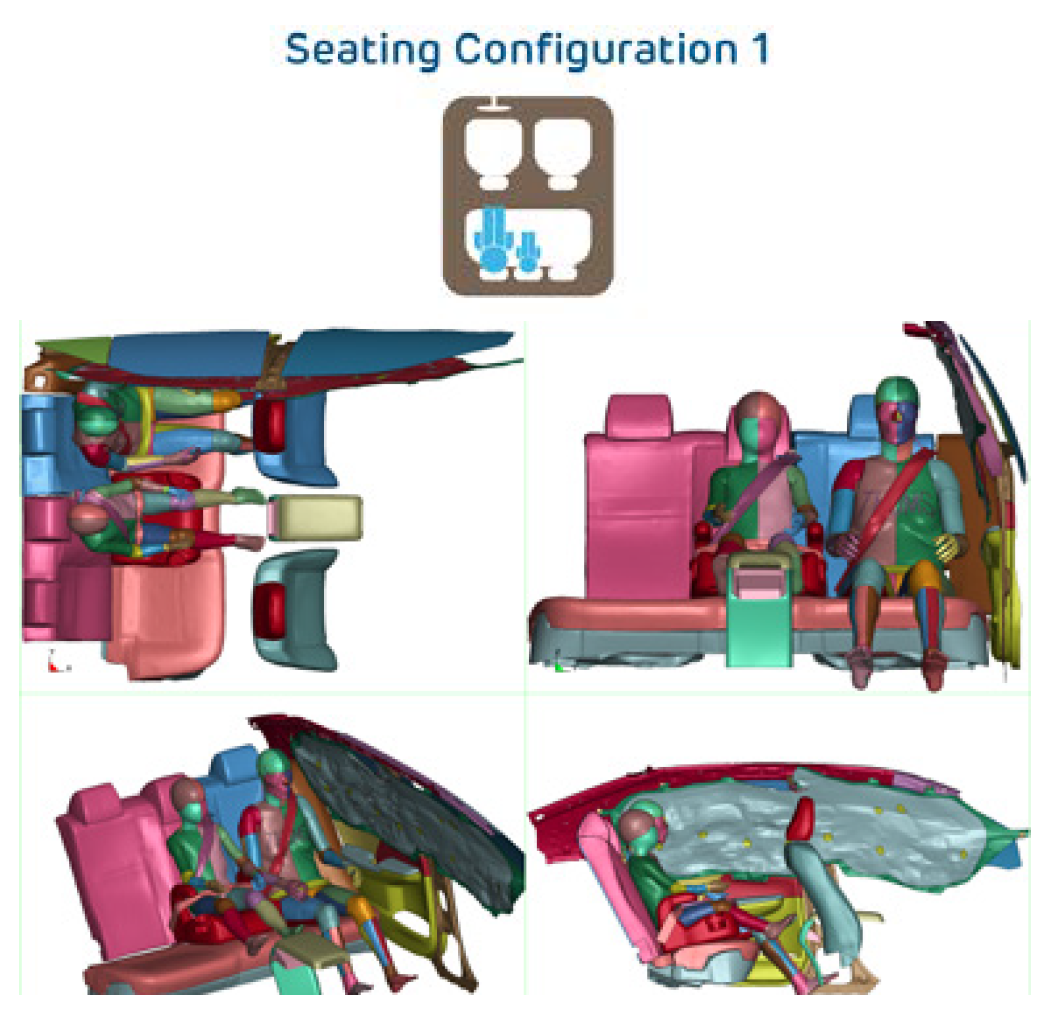Principal Investigator: Jalaj Maheshwari, MS, Children’s Hospital of Philadelphia
WHAT WAS THE PURPOSE OF THIS PROJECT?
Much research has been conducted on frontal crash tests involving front-seated occupants. This has led to significant advances in occupant protection in the front row driven by regulatory and consumer test programs. However, rear-seated occupants have not benefited from the same level of advances. One type of frontal crash, the overlap crash, has received a lot of attention: an overlap crash causes both frontal and lateral motion of the occupant during impact due to vehicle rotation about the point of crash. Protection requires understanding not only interaction with the vehicle interior in front of the occupant, but also interaction to the sides (including with other occupants).
It is important to assess how occupants move (kinematics) and what forces they develop that could potentially lead to injury (kinetics) during overlap crashes, as well as how advanced restraint systems can better protect these occupants. This is particularly important in the rear seat where the lateral motion is not restricted by vehicle interior components such as center consoles. In addition, occupant-to-occupant interaction, particularly with pediatric occupants, may be common and has not been previously explored.
HOW WAS THE RESEARCH CONDUCTED?
We used finite element modeling to systematically evaluate the effect of restraint characteristics on kinematics and kinetics of rear-seated occupants involved in small and moderate overlap crashes using the 6-year-old PIPER human body model and the THUMS 5th percentile female human body model. We simulated scenarios under different restraint conditions (load limiter/seat belt elongation), CRS (low-back/high-back boosters), and seating positions (rear left outboard/rear center). In each simulation, the two occupant models were placed adjacent to one another.
WHAT DID YOU FIND?
Lower seat belt load limits can cause higher occupant head excursion, increasing the likelihood of head contact with the front row seats and interaction with other passengers in the rear seat. This interaction can lead to even greater head injury risk than cases without any interaction, which we found surprising. To improve rear-seat safety, vehicle restraint design needs to account for various child and adolescent sizes and any potential occupant interaction.
WHAT ARE THE INDUSTRY IMPLICATIONS?
This data can aid future development of restraints, CRS designs, and vehicle injury mitigation technologies, as well as inform government and regulatory divisions on protocol evaluation, including how these unique crashes can affect injury outcome.
WHAT’S NEXT?
This same line of research could investigate side impacts where interaction among rear-seated occupants is much greater.
Co-Investigator
Madeline Griffith, MSE, Children’s Hospital of Philadelphia
Student
Shreyas Sarfare, MSE, University of Pennsylvania
IAB Mentors
Bill Lanz, American Honda Motor Co., Inc.; Jonathan Gondek, Calspan Corporation; Jennifer Stockburger, Consumer Reports; Emily Thomas, Consumer Reports; Mark LaPlante, Graco Children’s Products Inc.; Joshua Gazaway, Graco Children’s Products Inc.; Jerry Wang, Humanetics Innovative Solutions Inc.; Kyle Mason, Iron Mountains LLC; Jason Stammen, National Highway Traffic Safety Administration; Steve Gerhart, Nuna Baby Essentials, Inc.; Schuyler St. Lawrence, Toyota USA; Uwe Meissner, Technical Advisor

